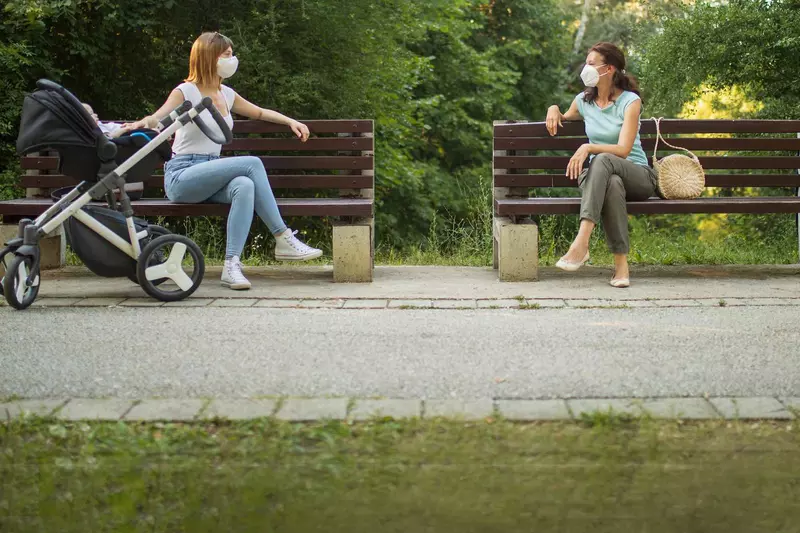- AdventHealth

Is there a birthday coming up in your family? Are you starting to plan for the holidays? Whether you’re considering gathering a group for an occasion or you’re just missing friends and family in general, there are some important things to consider before getting together.
Lately, we’ve all had to be a little more creative to find ways to stay connected. Video chats, drive-thru car parades, special sidewalk art notes, sending snail mail — these are just some of the ways family and friends have shared special moments this year.
But now, after several months of strict social distancing, you may be considering expanding your social bubble to gather in person with others outside your household. Since COVID-19 is still highly contagious, consider these tips before making your plans.
Can You Expand Your Social Bubble?
While the safest option is to limit close contact to your immediate household, health officials recognize some families may need additional support. Adding one other individual, couple or small family to your social circle may help you handle childcare, celebrate special moments and more while minimizing your risk of getting sick.
Adding additional people to your social bubble requires communication and agreement. To do it in the safest way possible:
- Agree on ground rules — People within your bubble should avoid getting within 6 feet of anyone outside your household or theirs
- Consider everyone’s needs — Neighbors and family members can offer help and support to one another (think about who would mutually benefit from closer contact)
- Recognize the risk — People who are 65 or older, or have an underlying health condition, face a greater risk of COVID-19 complications, so if you fit that description or if someone in your household does, it’s safer to keep your bubble small
- Stay consistent — The people in your bubble should remain the same from week to week
Once these conditions are met, you can spend time together and allow kids within the bubble to play with one another. Everyone will need to watch for and communicate about any symptoms of COVID-19, including cough, fever and shortness of breath.
If one person in your bubble gets sick, that person should stay in their own space and be cared for separately. Anyone else in the bubble who had close contact with that individual should self-quarantine, too. Talk with your health care provider and follow these steps if you or someone in your household is sick.
Do Your Own Contact Tracing Within Your Social Bubble
You may also want to keep track of the people you came into contact with, including the date, time and location. This practice, called contact tracing, can help in the event that you or someone in your social circle tests positive for COVID-19. If you can’t remember all the people you’ve been close to for more than 10 minutes, that’s a sign you might want to reduce your activity.
Continue Practicing Safe Hygiene and Mask-Wearing Techniques
The recommendation for everyone to wear a face covering in public places comes from the direction of the Centers for Disease Control and Prevention (CDC) after further research has proved face coverings are critical in helping our communities fight COVID-19.
Whether you make your own cloth face covering or purchase one, make sure it meets these criteria to ensure it will help provide protection:
- Allows for comfortable breathing
- Can be laundered and dried without damage or change to shape
- Completely covers nose and mouth
- Fits snugly against your face, resting under the chin and on the bridge of your nose
- Made with multiple layers of fabric
- Secures with ties or ear loops
Especially if you’re gathering in a group where social distancing of at least 6 feet cannot be maintained, make sure you are wearing a mask. The CDC also recommends that you:
- Avoid touching your eyes, nose and mouth
- Clean and disinfect frequently touched surfaces daily
- Cover coughs and sneezes with a tissue and wash your hands immediately
- Practice social distancing by staying 6 feet away from others in public
- Stay home if you’re sick
- Wash your hands often with soap and water or sanitizer that is at least 60% alcohol
We’re Here When You Need Us
Whether you’re staying home or seeing loved ones safely, we support you doing what’s best for your well-being. We’re committed to caring for you in person and through virtual means whenever you need health care. To stay up-to-date on the latest in COVID-19 recommendations, visit the Coronavirus Resource Hub.


